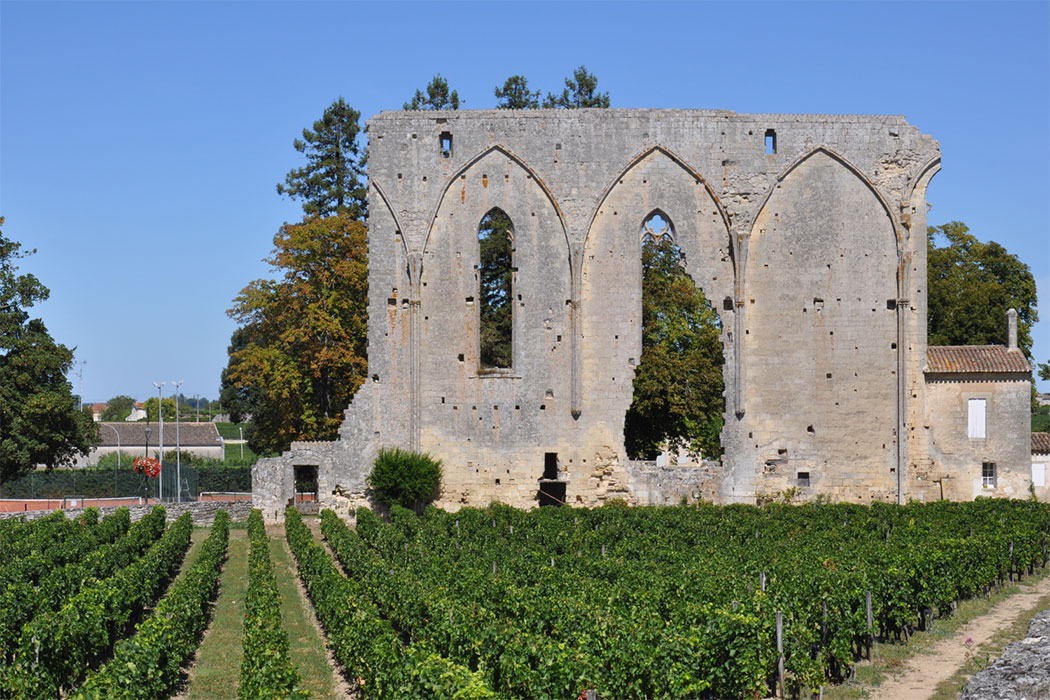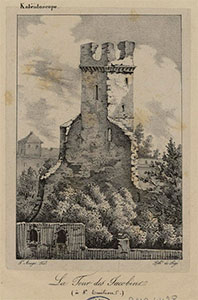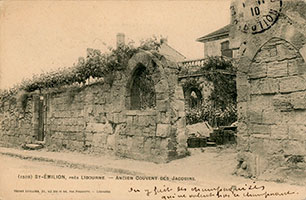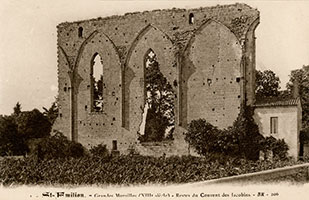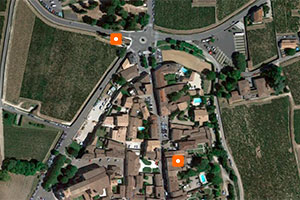Convent of the Jacobins of Saint-Émilion
Dominicains de Saint-Émilion / Dominicans of Saint-Émilion / Grande Muraille
(Saint-Émilion, Gironde)
The Dominicans arrived in Saint-Émilion in 1262, where they established a convent to the north of the town, near the Bourgeoise Gate, outside the walls. This house had a brief existence in that location, as it was demolished in 1341 for military reasons. In 1378, the community relocated within the town walls, but the friars did not secure a stable presence in the town until the early 15th century.
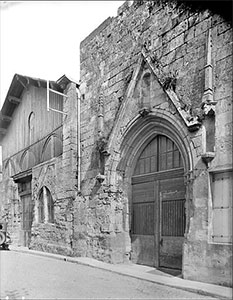
Second establishment, in the town
Photograph by Georges Estève (before 1934)
Ministère de la Culture (France)
Médiathèque de l'architecture et du patrimoine, diffusion RMN-GP
They remained in this second establishment until the French Revolution, when the community was forced to leave, and the site passed into private hands. Most of the complex was lost, and the church was repurposed for industrial activities, including use as a bell foundry. Today, part of the façade of this second building is still preserved. From the first convent, a wall of the former church remains, known as the Grande Muraille, standing isolated outside the town.
- GUINODIE, Raymond (1876). Histoire de Libourne et des autres villes et bourgs de son arrondissement. Libourne: Maleville
- SERBAT, M. L. (1913). Saint-Émilion. Congrès archéologique de France. LXXIX session. París: Picard
